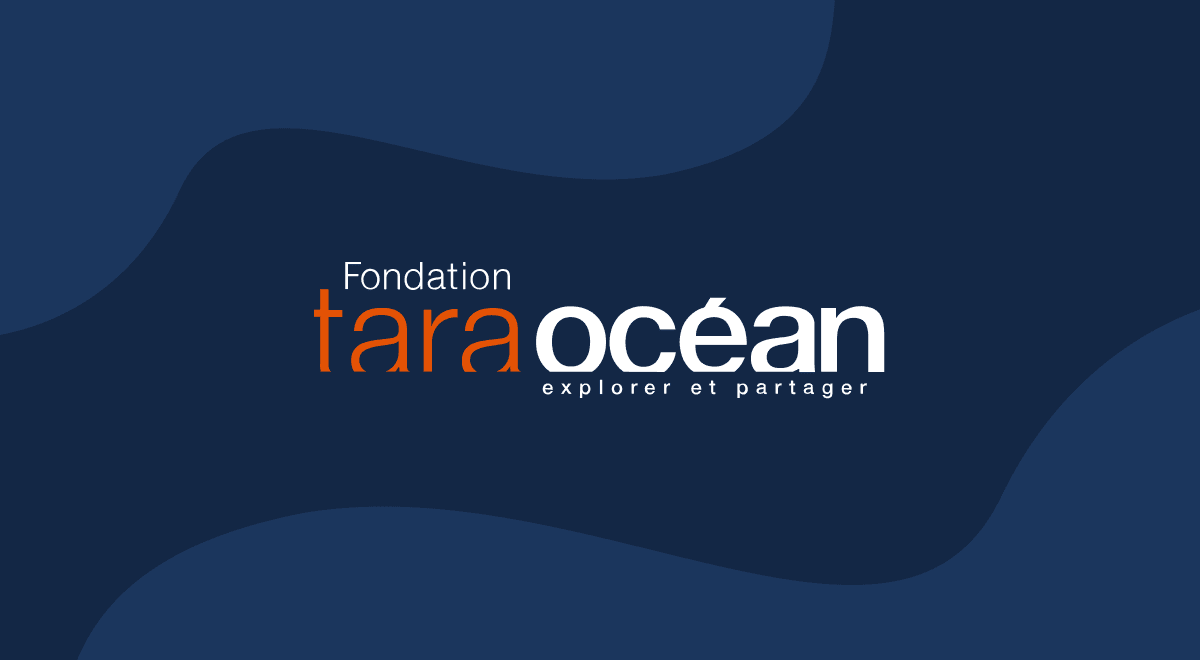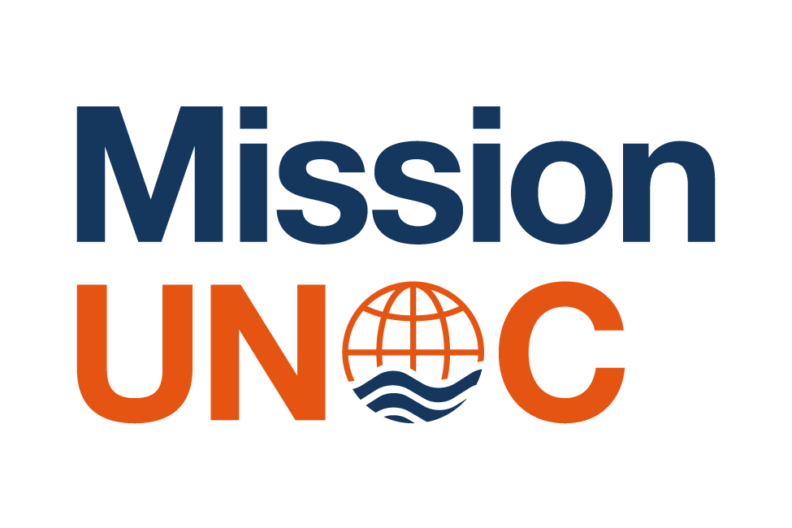Microbiome mission: Tara studies the Brazilian coasts
Marine microorganisms play an essential role in ocean ecosystems. They are among the key players in our planet’s health. Understanding the functioning of these invisible inhabitants of the Ocean, studying their vulnerability to climate change and pollution is at the heart of the Microbiome mission. After 4 months of scientific exploration in Chile and a 2-month technical stopover in Martinique to refine scientific protocols, Tara studied the Brazilian coasts from September to November 2021 and made 5 ports of call to raise awareness among the general public.
Ecosystems are rich in biodiversity off the coast of Brazil
The Brazilian coasts are characterized by the presence of strong ocean currents. These currents ensure an extended mixing of the Amazon waters in the Atlantic Ocean that influences marine life. The first stage of the mission was to study the Amazon plume.
- The Amazon plume: 2 major studies
The Amazon River is the largest river in the world. On average, it discharges about 200 million liters of freshwater per second into the Atlantic Ocean. This freshwater inflow is at the origin of a very dynamic surface plume affecting salinity and temperature in the tropical Atlantic Ocean. It also transports land-based materials, sediments, nutrients and organic matter into the Ocean. These intakes have a strong influence on the marine microbiome’s composition, interactions between microorganisms and ultimately global biogeochemical cycles.


- The Amazon plume
From the mouth of the Amazon River to 3,000 km offshore, the mixture of fresh and sea waters form the Amazon plume. It results from the presence of a strong ocean current originating in northern Brazil, moving north along the Brazilian coast and then deviating towards Africa north of the mouth of the Amazon River. This current and the huge eddies it generates carry the river waters and spread them over a wide area, adding nutrients (and pollutants) to very clear, nutrient-poor sea waters.
Microbiomes mission
The Amazon River
Aboard Tara, scientists study these eddies that can reach up to 300 km in diameter. Their goal is to understand how these eddies transport these nutrient-rich waters to the islands of the Caribbean Sea. They also bring plankton from the South Atlantic Ocean to the region where originates the Gulf Stream (at the southern tip of Florida), thus creating a bridge between the 2 hemispheres.
- Sargassum
Sargassum, floating macroalgae that normally inhabit the “Sargasso Sea” – region of the Atlantic Ocean bounded by 4 currents, including the Gulf Stream, forming an ocean gyre – are also studied in this area. Scientists characterized the species present (taxonomy) and described them (morphology).
Sargassum experienced a significant proliferation over the past decade, invading new regions located south and east of the Caribbean Sea to reach, in recent years, the African coasts, more than 4,000 km east of the mouth of the Amazon River. The accumulation of large amounts of decomposing algae on the coasts of the 2 continents has led to losses for tourist activities and a strong alteration of ecosystems. Although the exact causes of this dramatic ecological change remain unclear to date, scientists strongly suspect that soil erosion in Brazil as a result of deforestation and increased use of fertilizers and cattle ranching, led to an enrichment of the Amazon plume in chemicals – in particular nitrogen, a key nutrient for Sargassum.
Tara’s scientific team studied this part of the Amazon plume, as well as its microbial genetic diversity and functional capabilities using state-of-the-art molecular and microscopic techniques, while measuring a large number of environmental, physical and chemical parameters.
- Studying the Amazon river
After studying its plume, Tara set sail towards the Amazon River. In the heart of the river, the scientific team analyzed the presence of microplastics and nanoplastics. The Amazon River, which moves through 40% of South America, carries a lot of plastic and chemical pollution. Samples were collected upstream and downstream of Belém and Salvador de Bahia to understand the impact that these cities have on plastic pollution.
- Studying of submerged mountain ranges and volcanoes
An area rich in marine biodiversity composed of underwater mountain ranges and volcanoes lies between Salvador de Bahia and Rio de Janeiro in Brazil. This submerged mountain range called Vittoria Trinidad is located in the most nutrient-poor part of the Atlantic Ocean. It thus constitutes a marine biodiversity hotspot since it enriches the area with nutrients and is home to many coral reefs.
Sampling and studying this area will allow scientists to:
- understand the distribution of the ocean microbiome and its composition through observation and quantification of the species present.
- bioprospect (explore natural sources for micromolecules, macromolecules and biochemical and genetic information that could be developed into commercially valuable products for the agricultural, aquaculture, bioremediation, cosmetics, nanotechnology, or pharmaceutical industries) through the collection of biological resources.
A distinguishing feature of the study of seamounts off the coast of Brazil is our sampling protocol. In order to complete an exhaustive description of this area, scientists collected samples day and night. Indeed, many plankton species migrate from the depths up to the surface at night to feed:
“Many of these small organisms move upwards overnight, thus leading to the largest animal migration on Earth! Our second objective was therefore to collect biological samples at night to better understand this variation”, say Pedro Junger and Érica Becker, ecologists aboard Tara.
This way scientists collect a multitude of data to precisely define this unique ecosystem.
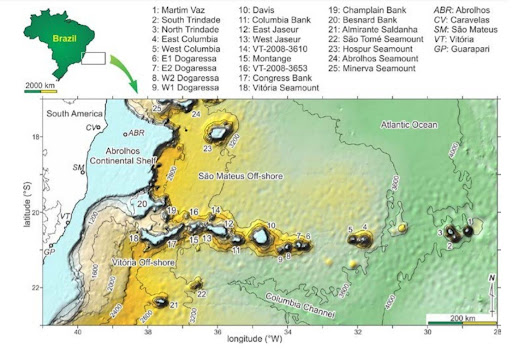
What is the ocean microbiome?
Marine ecosystems are driven by the ocean microbiome which includes all microscopic organisms (also known as plankton) inhabiting the ocean. They play an essential role in most flows of energy and matter, including pollutants.
The microbiome represents approximately 60% of the biomass in the global Ocean. It is the basis of all marine life forms. Therefore, it is essential to study it:

Analyzing the ocean microbiome’s circulation off the Brazilian coasts and understanding its impacts on the microbiome are key themes of this expedition.
What different fields of research are required to study the Atlantic Ocean?
- Describing and understanding the functioning of the marine microbiome.
- Location of the Vittoria Trinidad submerged mountain range
- Chile and Africa: in these regions, a phenomenon of upwelling (wind-driven motion of dense, cool, and usually nutrient-rich waters from the depths towards the ocean surface) takes place. Upwellings are essential for fish stocks and the carbon pump.
- Studying the impact of plastic, microplastic and chemical pollution on the microbiome.
- Studying the ocean plumes of great rivers: Amazon (South America); Orange, Congo, Ogowe and Senegal (Africa)
- Analyzing the impact of climate change on global currents and the microbiome’s distribution.
- Guyana – Amazon : connecting and exchange areas between 2 ocean basins under the influence of the Amazon River.
- Atlantic Ocean : study of the microbiome’s movements under the action of eddies
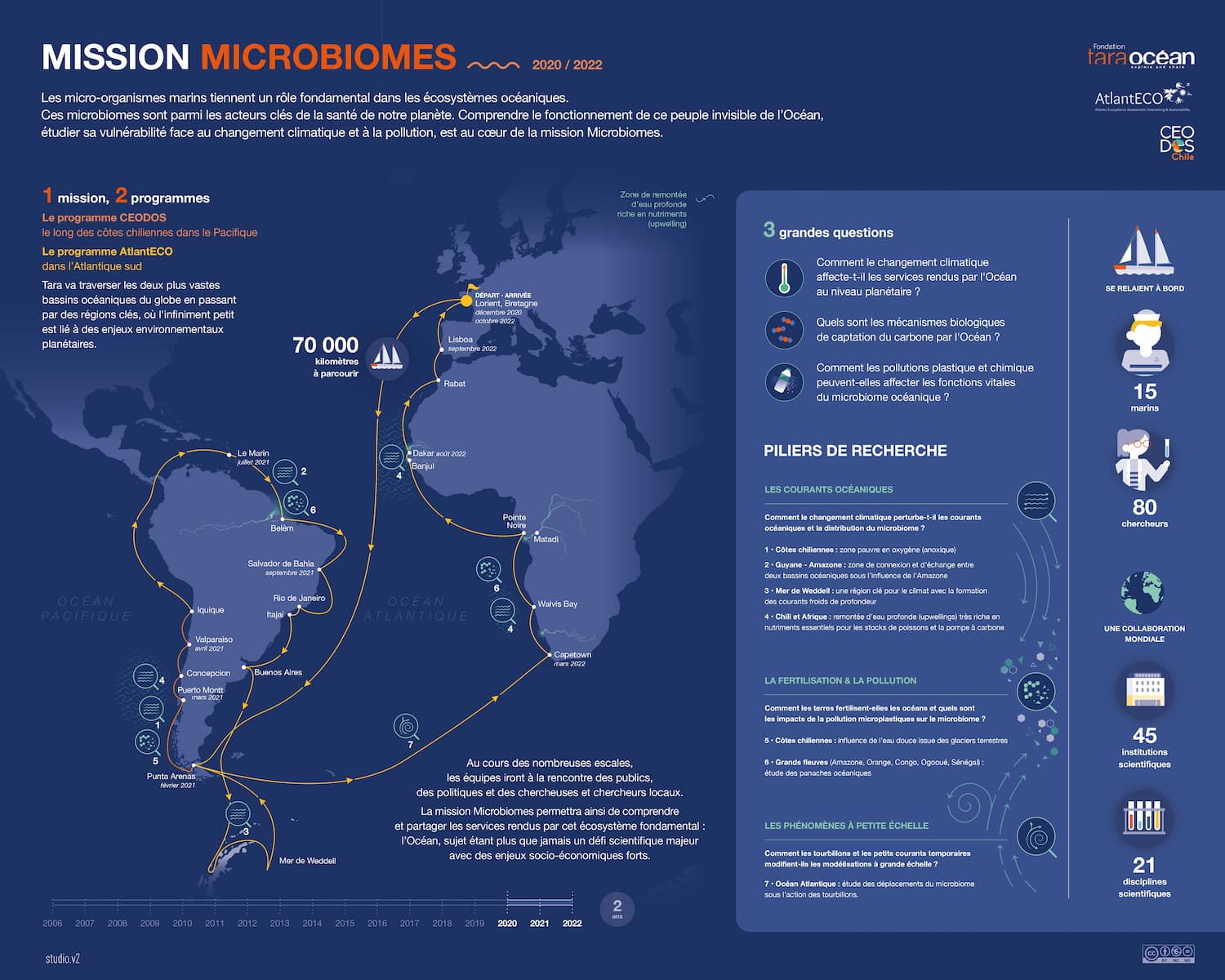
Exploring the Ocean to share knowledge: 5 stopovers in Brazil
La The schooner made 5 ports of call in Brazil to raise awareness:
- Belém, September 18-23
- Salvador de Bahia, October 10-14
- Rio de Janeiro, November 4-11
- Santos, November 12-13
- Itajaí, November 15-19
Tara’s stopovers are key moments of sharing and exchange, and small asides in the scientific adventure. For a few days, the scientific team and crew members live at the rhythm of encounters with the general public and schoolchildren during virtual tours of the schooner, educational workshops, exhibitions, conferences and screenings.
To carry out these actions and raise awareness among the largest audience possible on the importance of preserving the Ocean, the Tara Ocean Foundation has joined forces with Brazilian partner universities of the AtlantECO project (Federal Universities of São Carlos, Santa Catarina, Bahia and Rio Grande and University of Sao Paulo), the French Embassy, as well as Alliances françaises .
More than 1,300 people attended public tours, 600 participated in conferences and screenings organized by the Foundation, and about 1,100 students came to meet Tara’s crew.
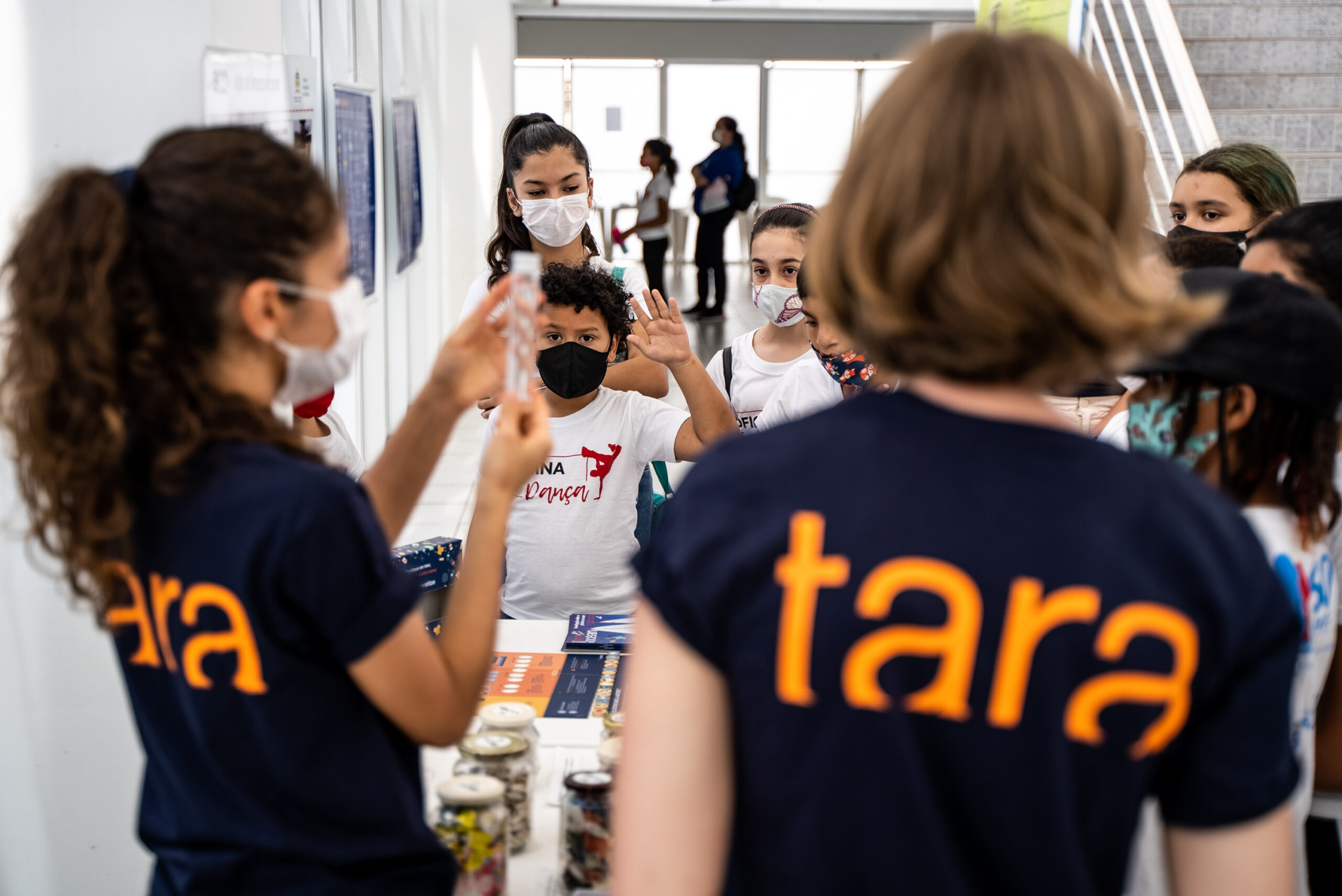
These stopovers were also an opportunity for the Foundation to meet with prominent personalities and discover local initiatives which share the same values.
During the port of call in Rio de Janeiro, the Tara Ocean Foundation met the winners of the France Eco Lab project, a program run by the French Embassy which aims to promote ecological initiatives.
In Salvador de Bahia, we met with Anna Luísa Beserra, founder and CEO of the Sustainable Development & Water for All (SDW) company, who introduced us to the Aqualuz project, a technology that provides safe drinking water in rural areas of the Amazon region.
During this same stopover, we invited Catarina Lorenzo, a Brazilian climate activist, to talk about her commitment to the environment in Brazil. Finally, we welcomed aboard Tara the writer and sailor, Tamara Klink, with whom we share a passion for the Ocean and navigation.

